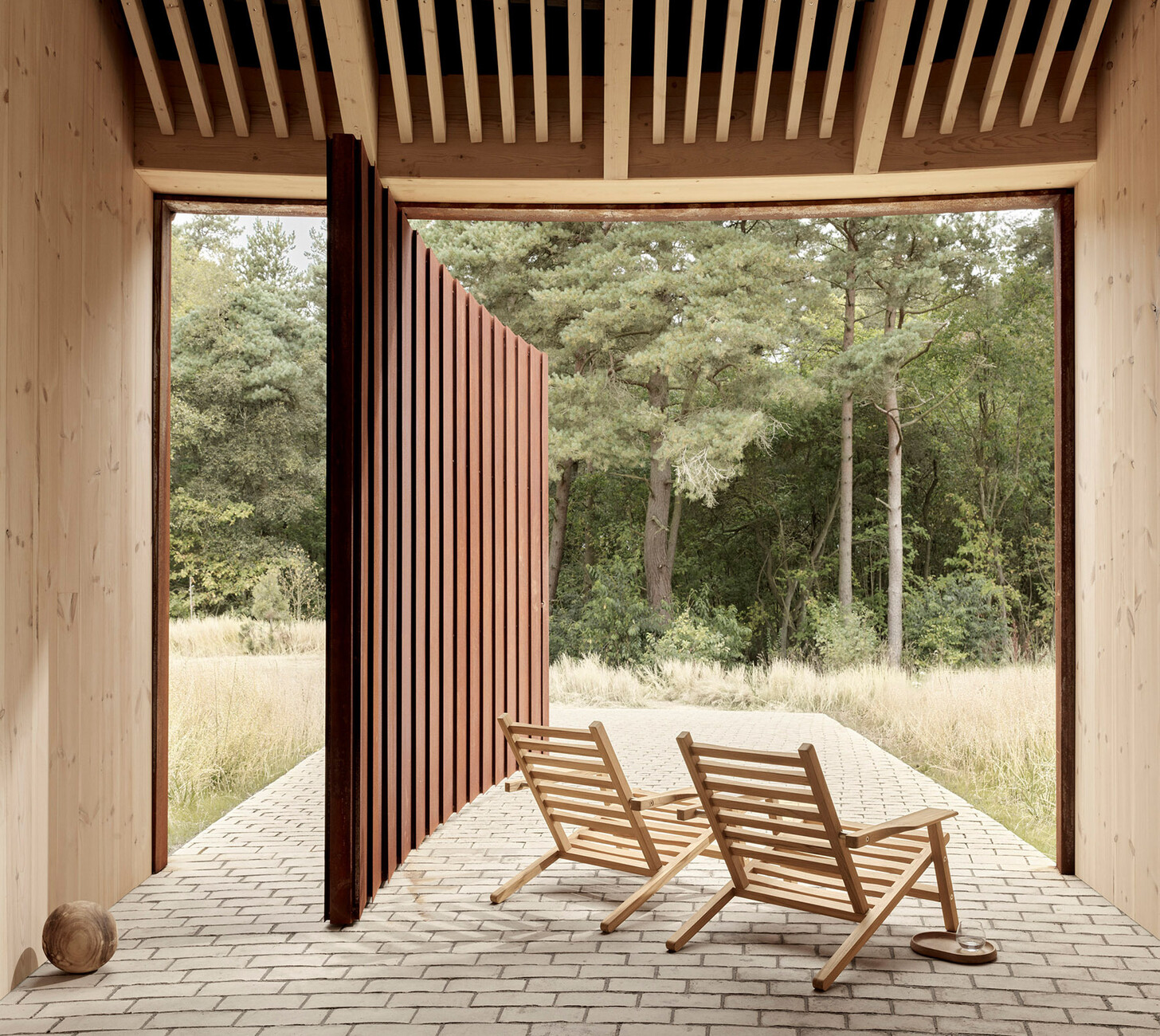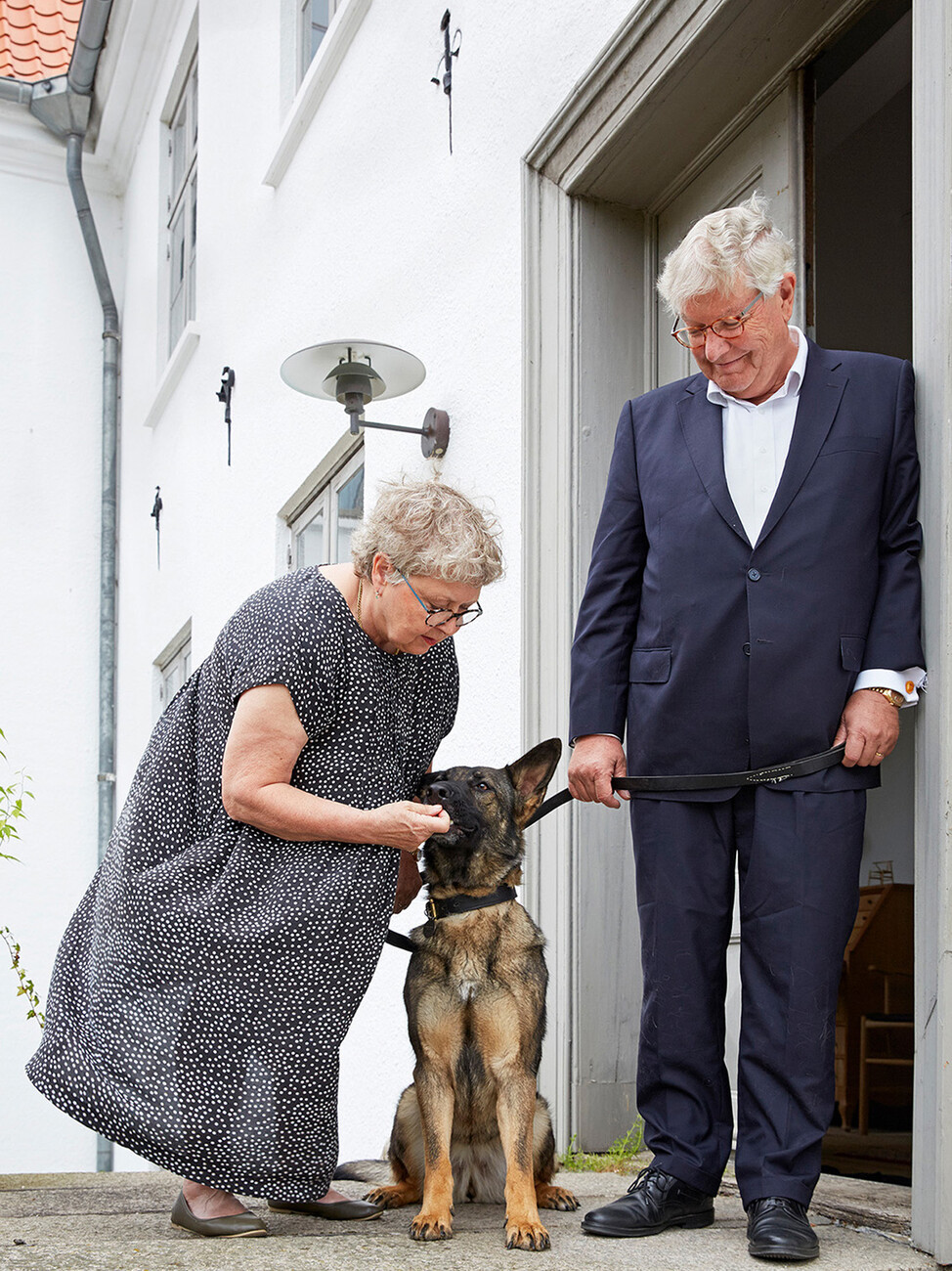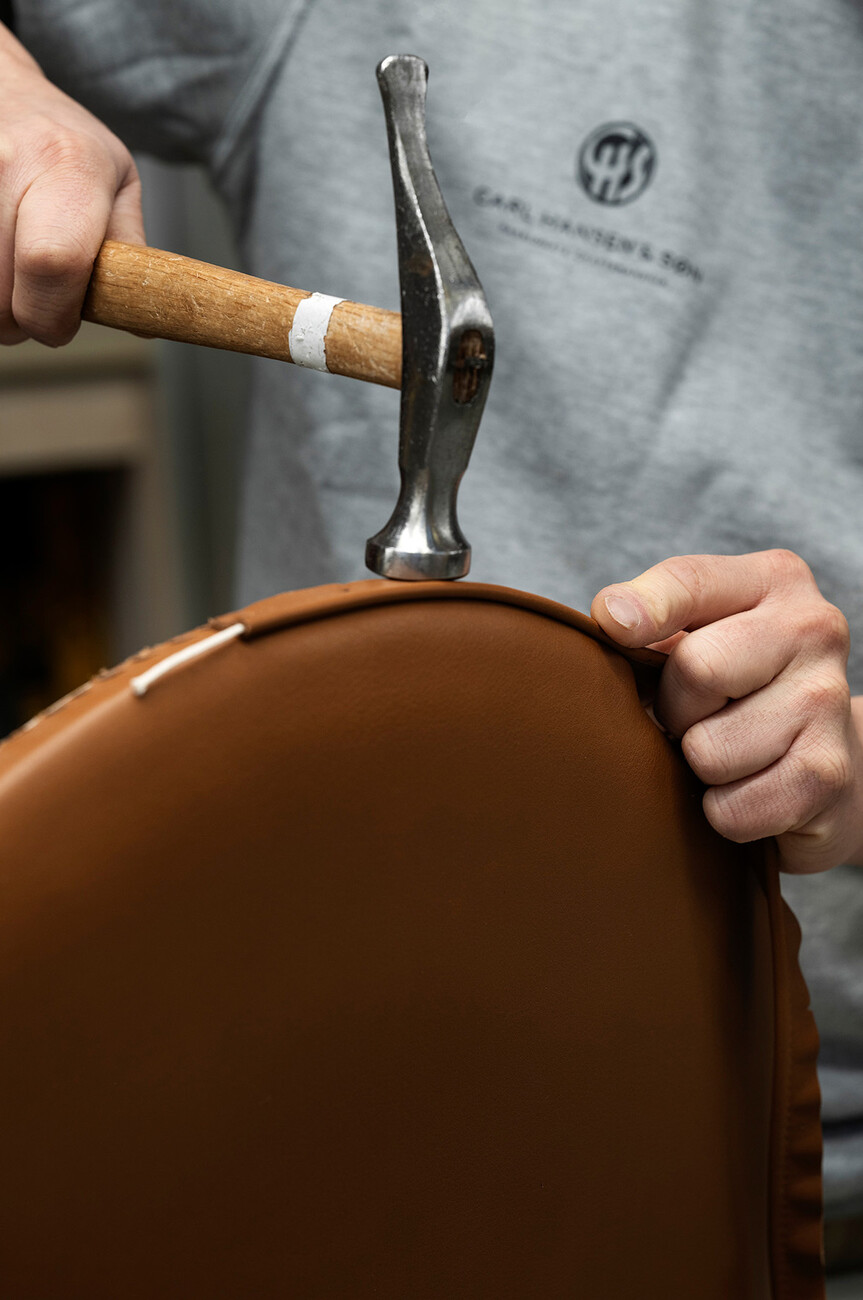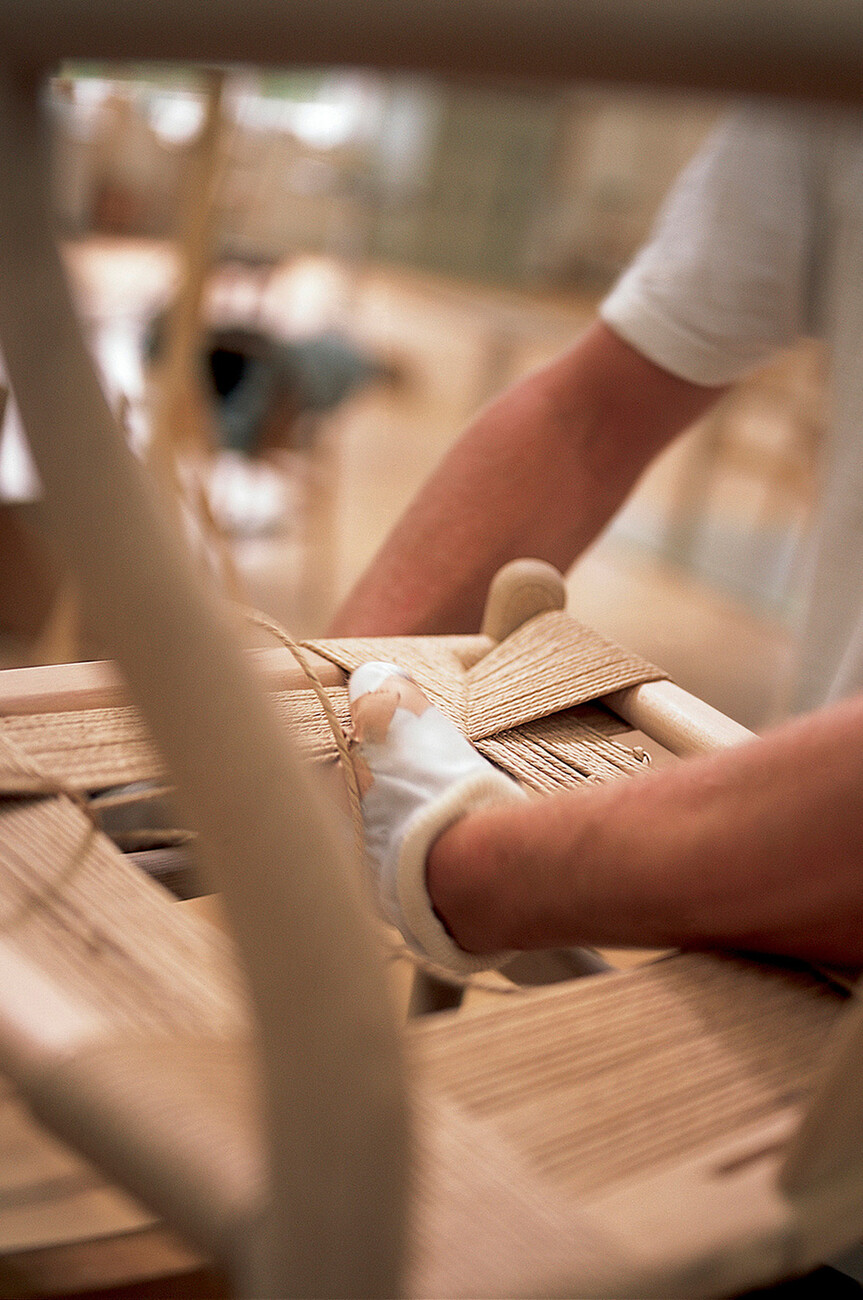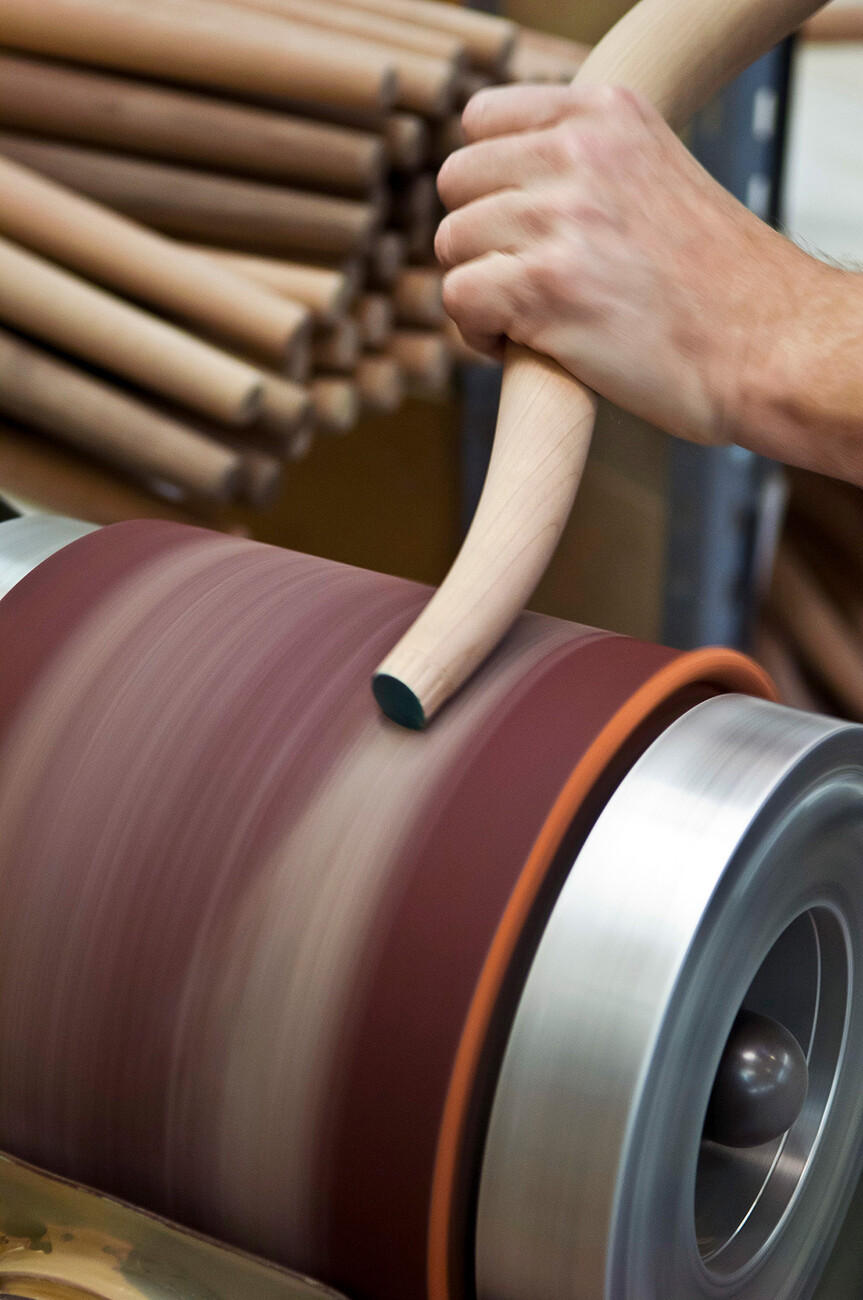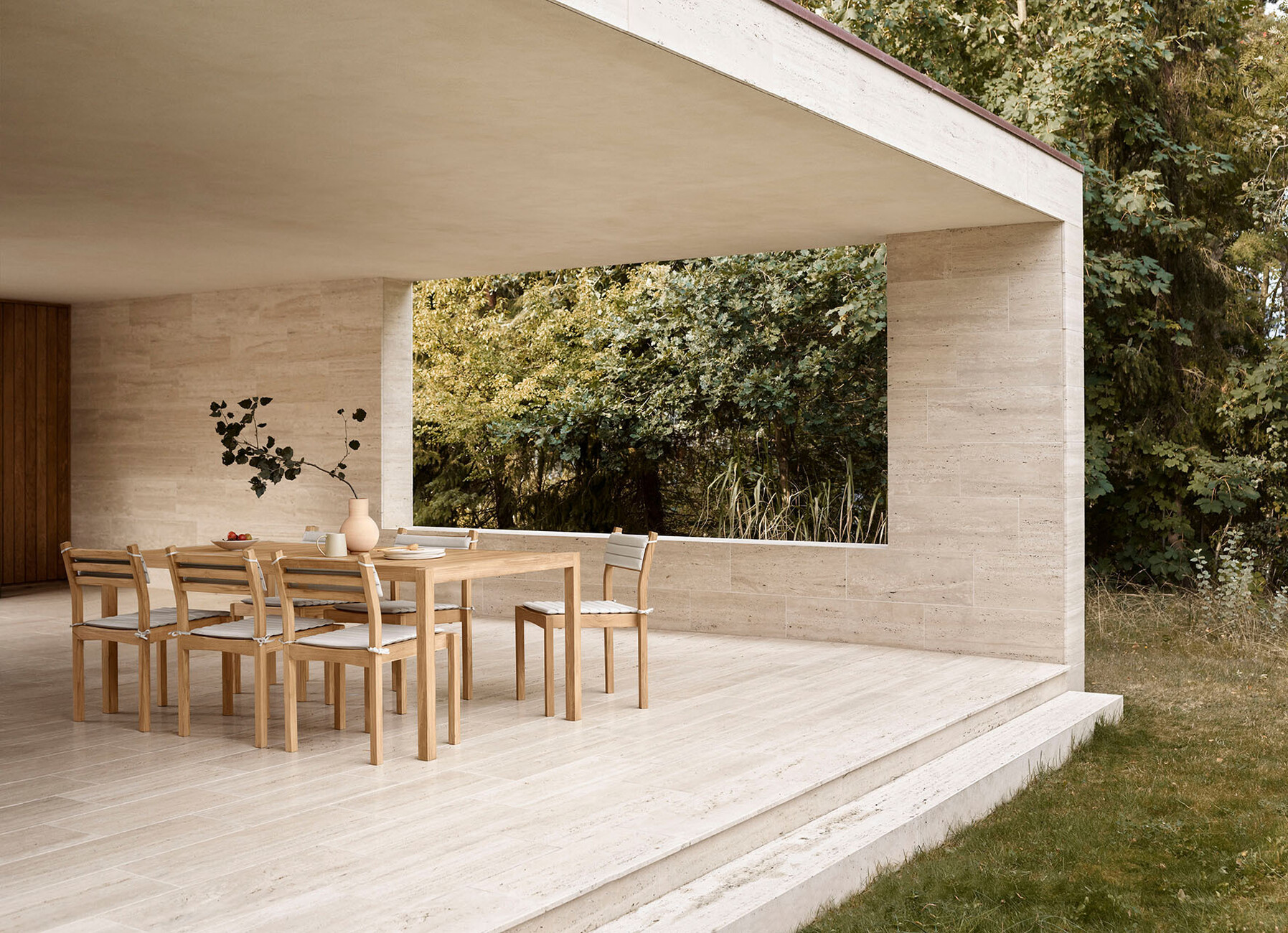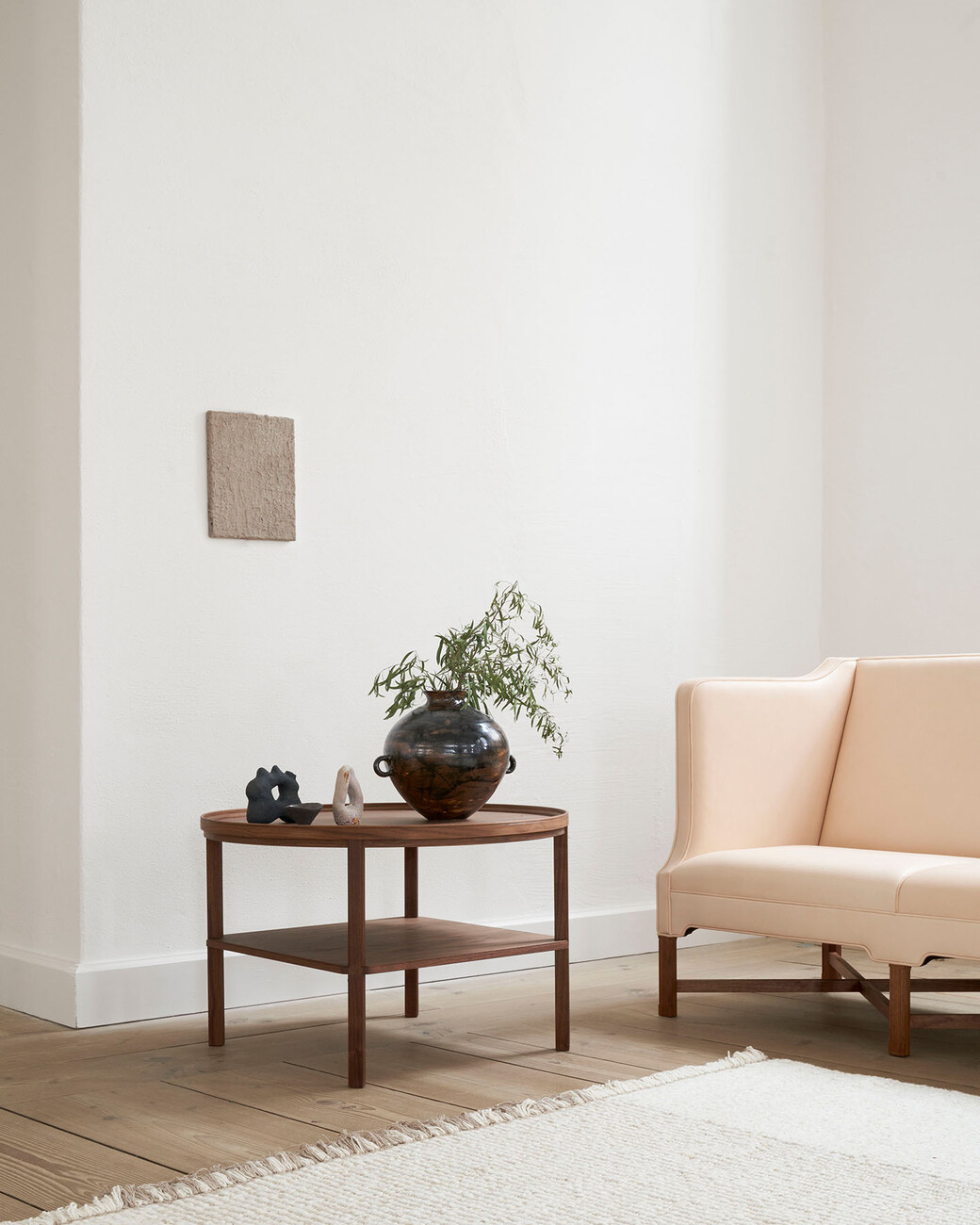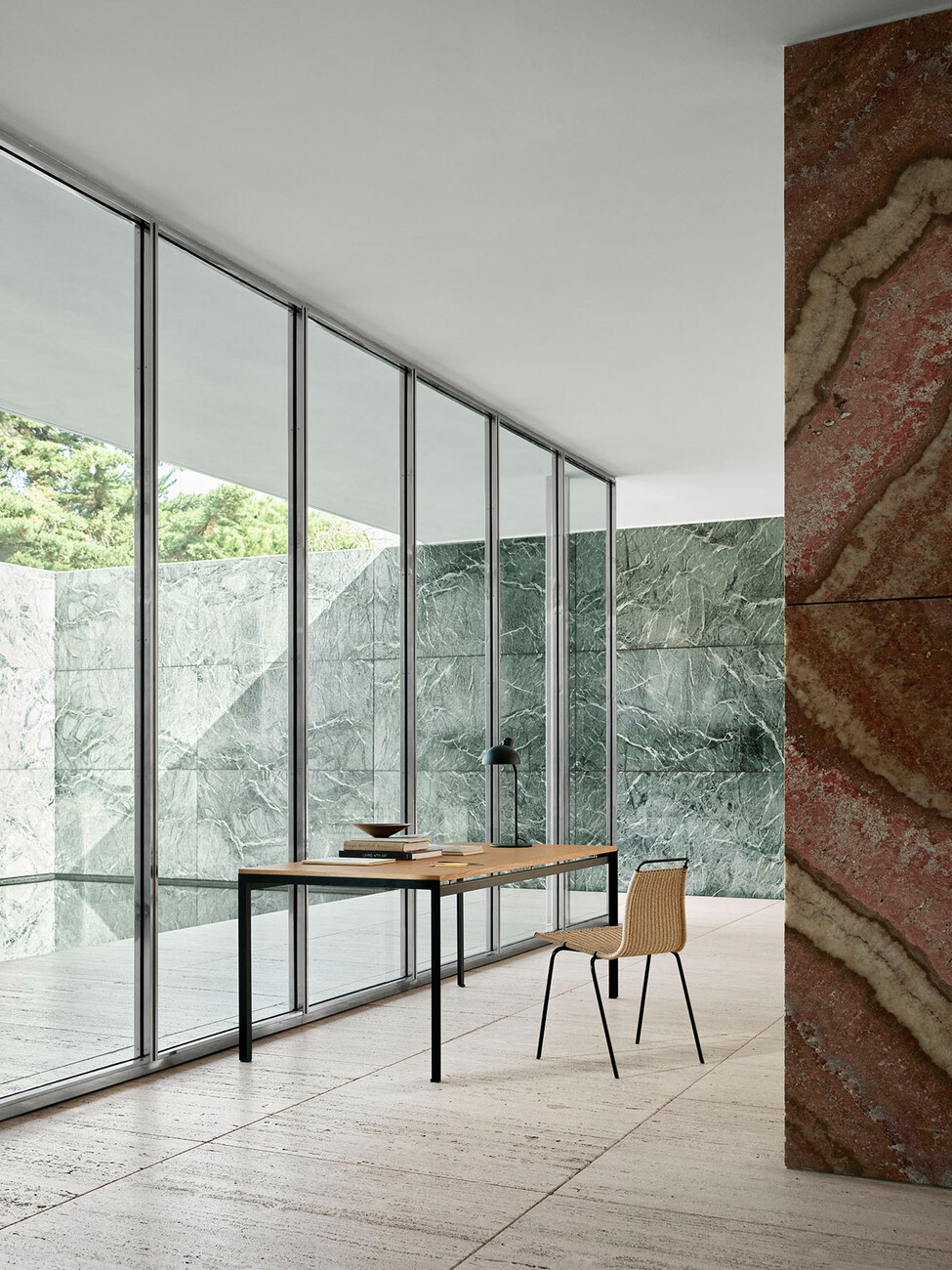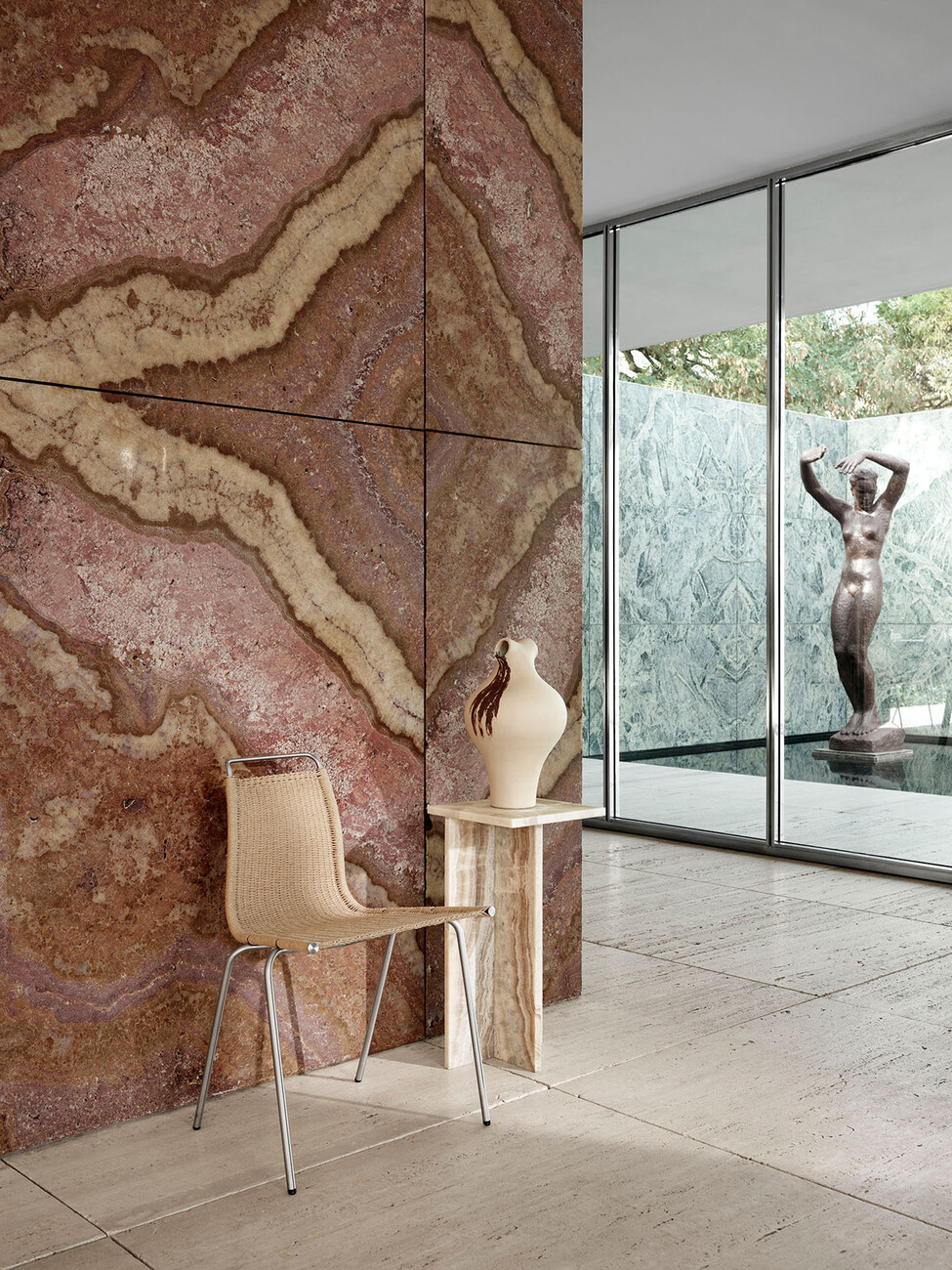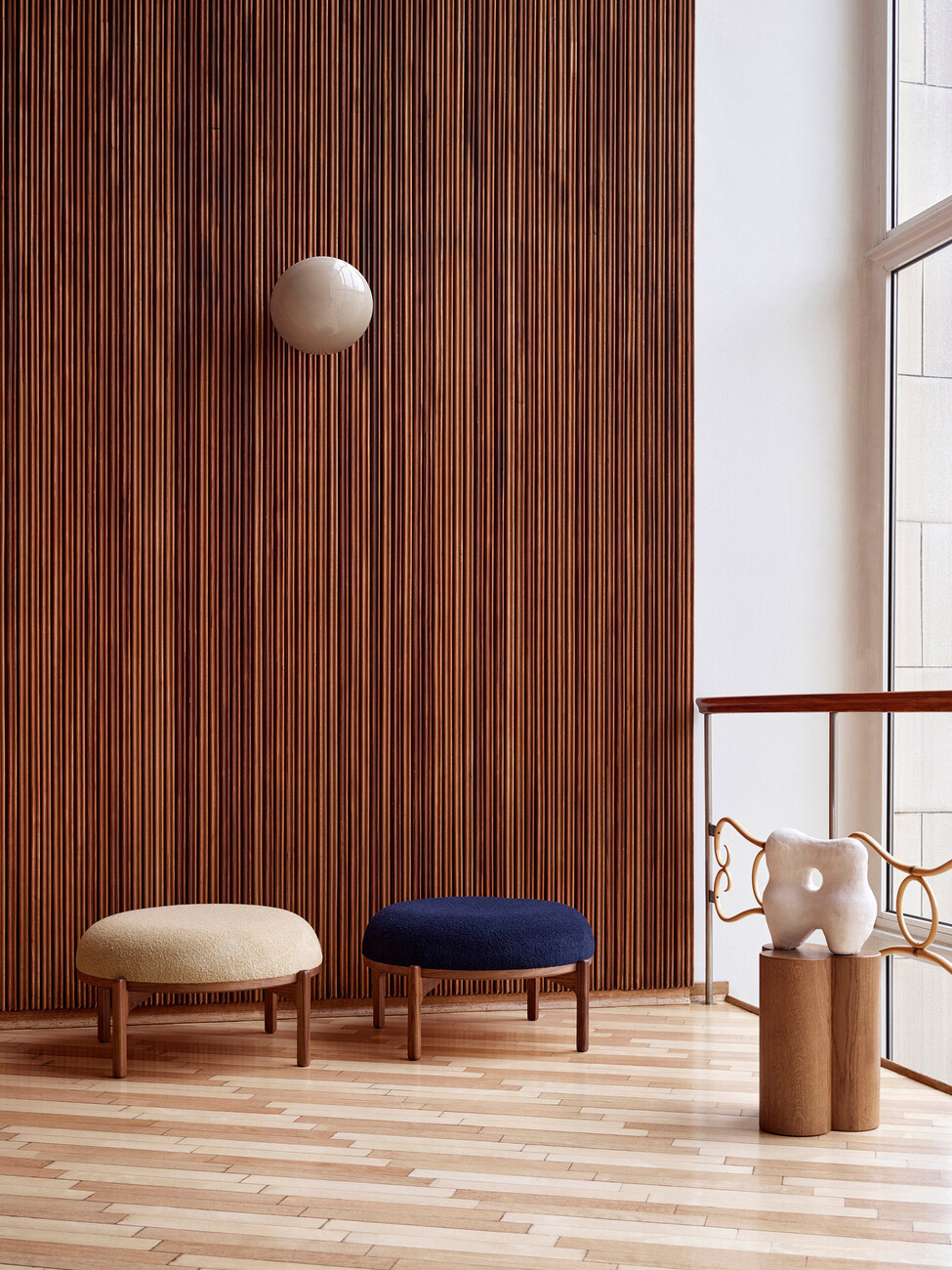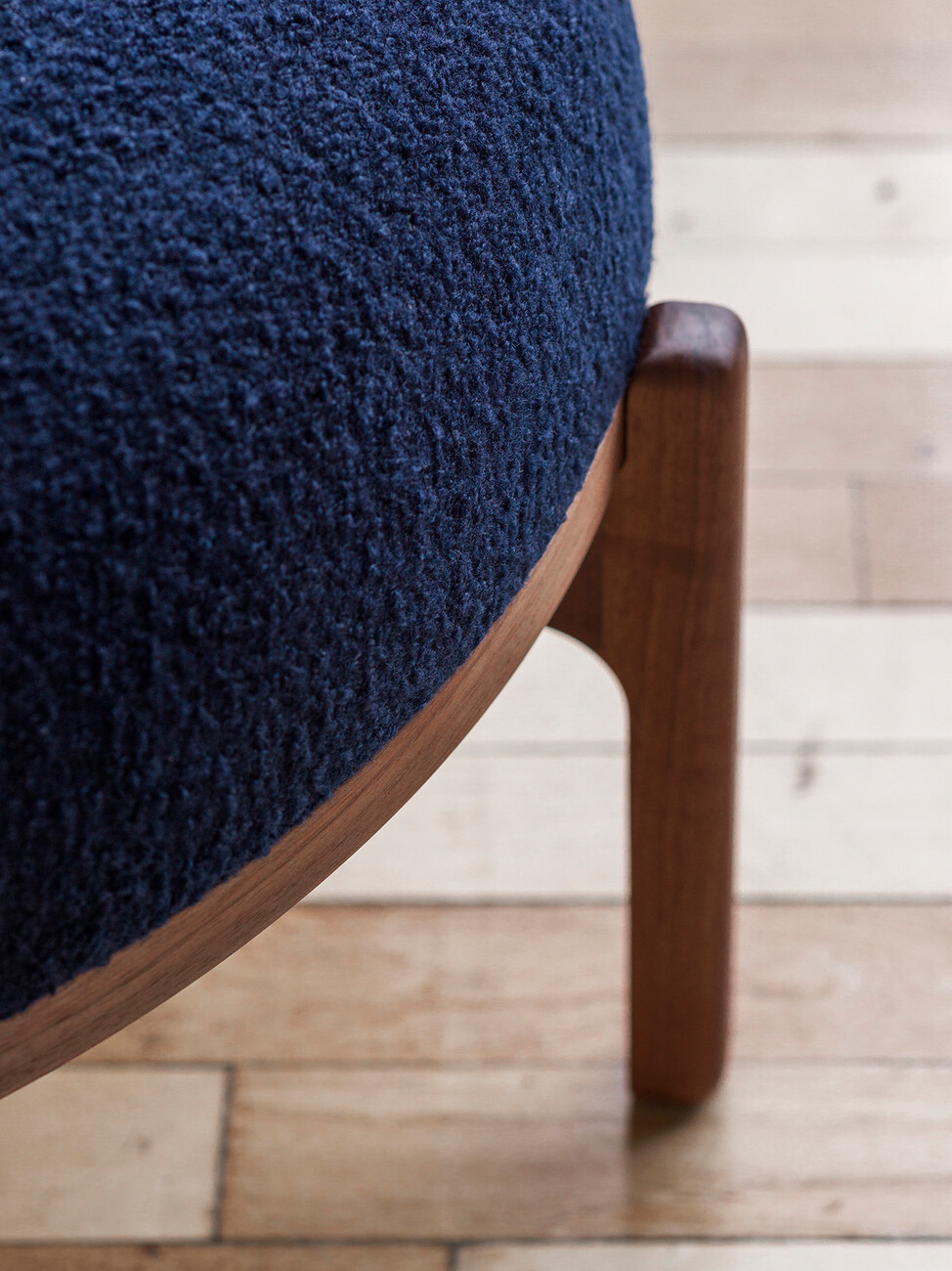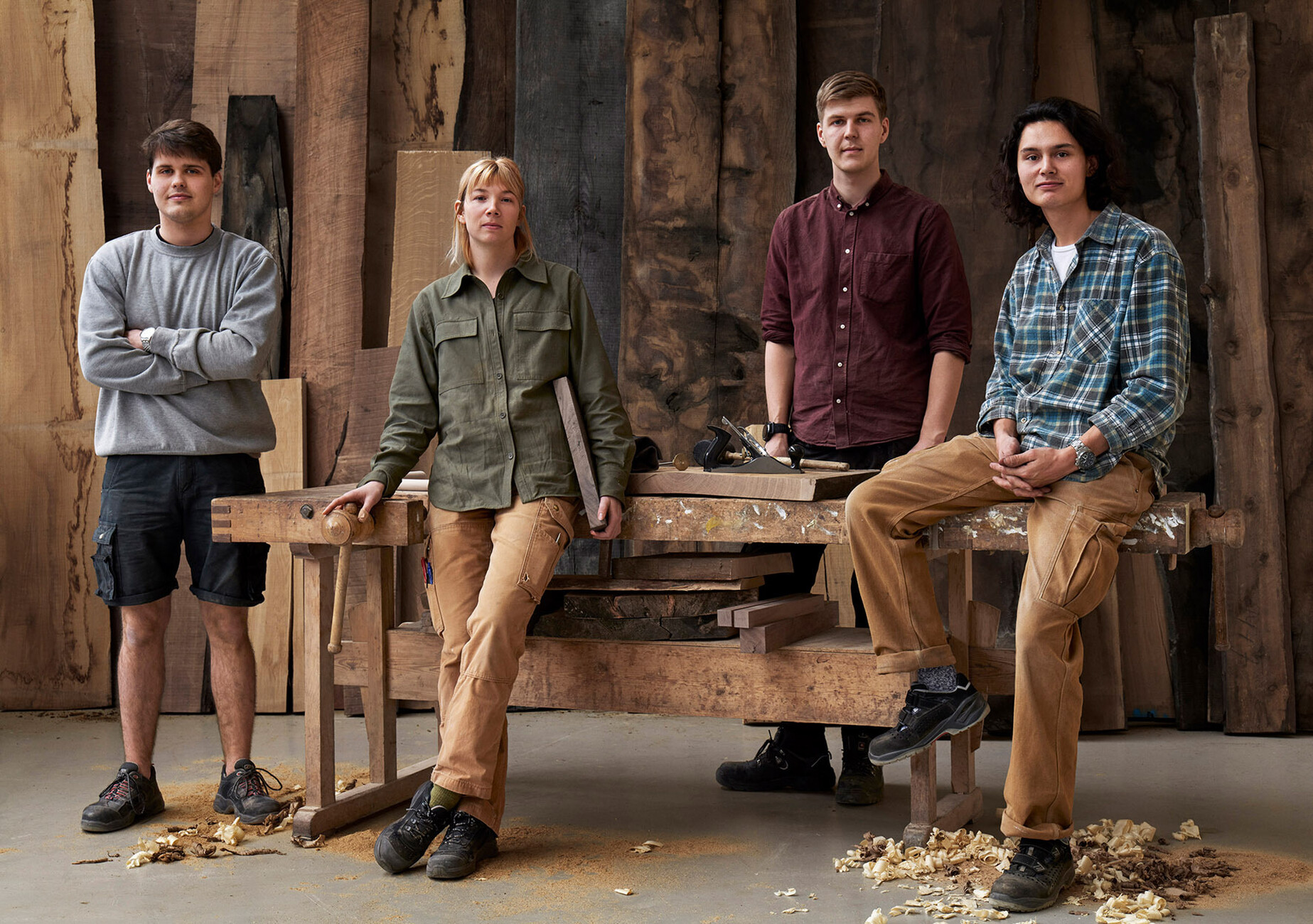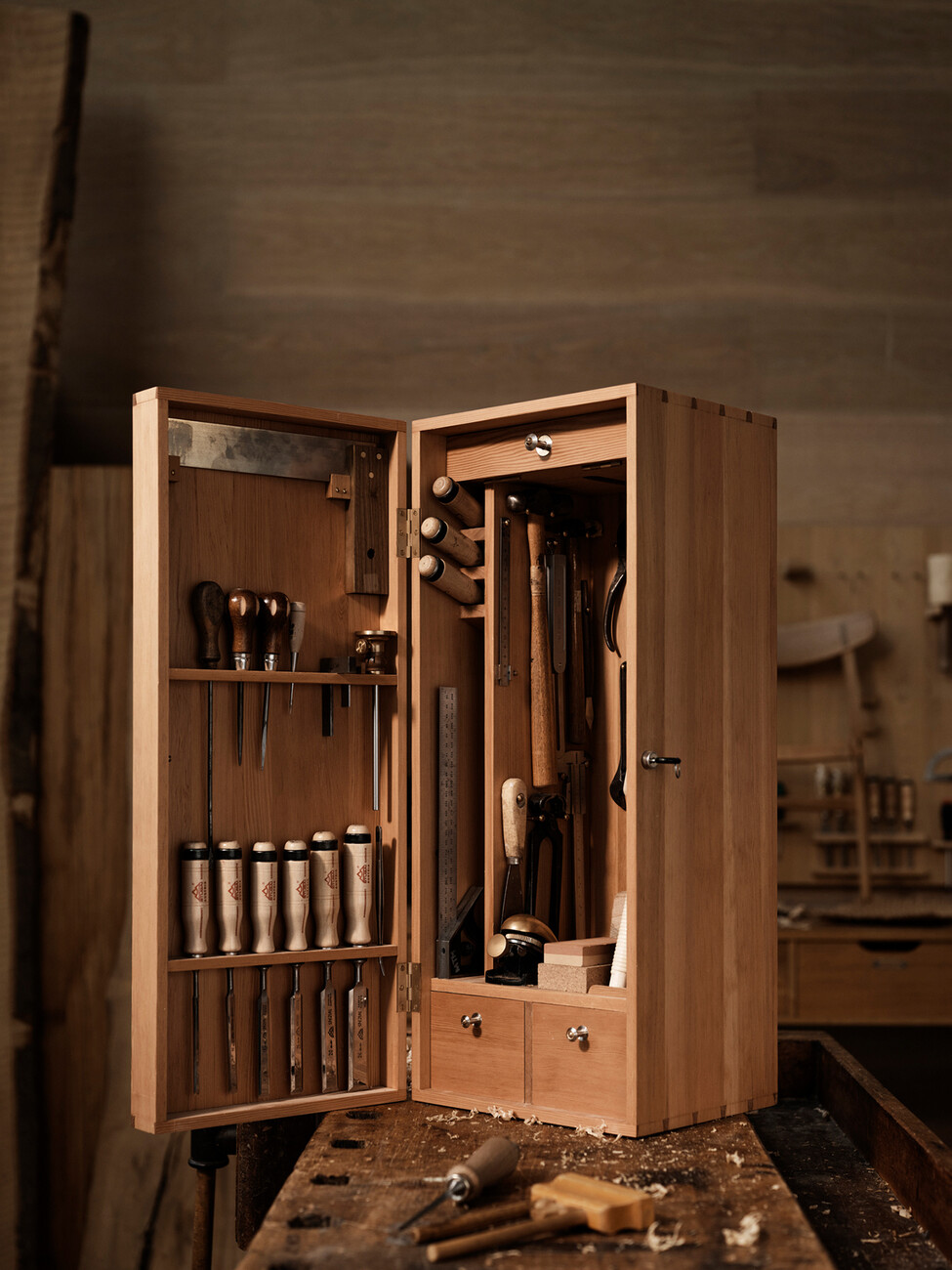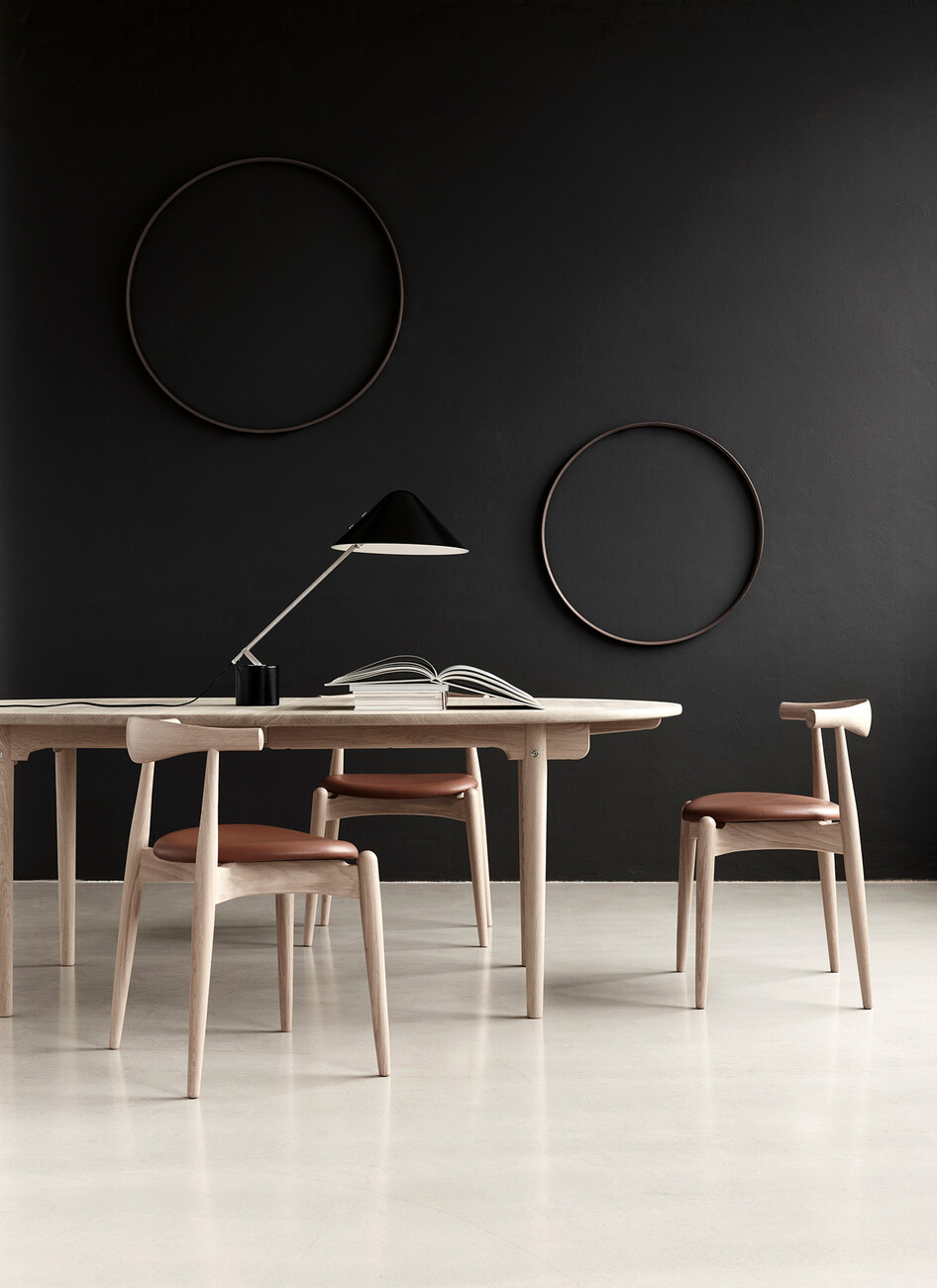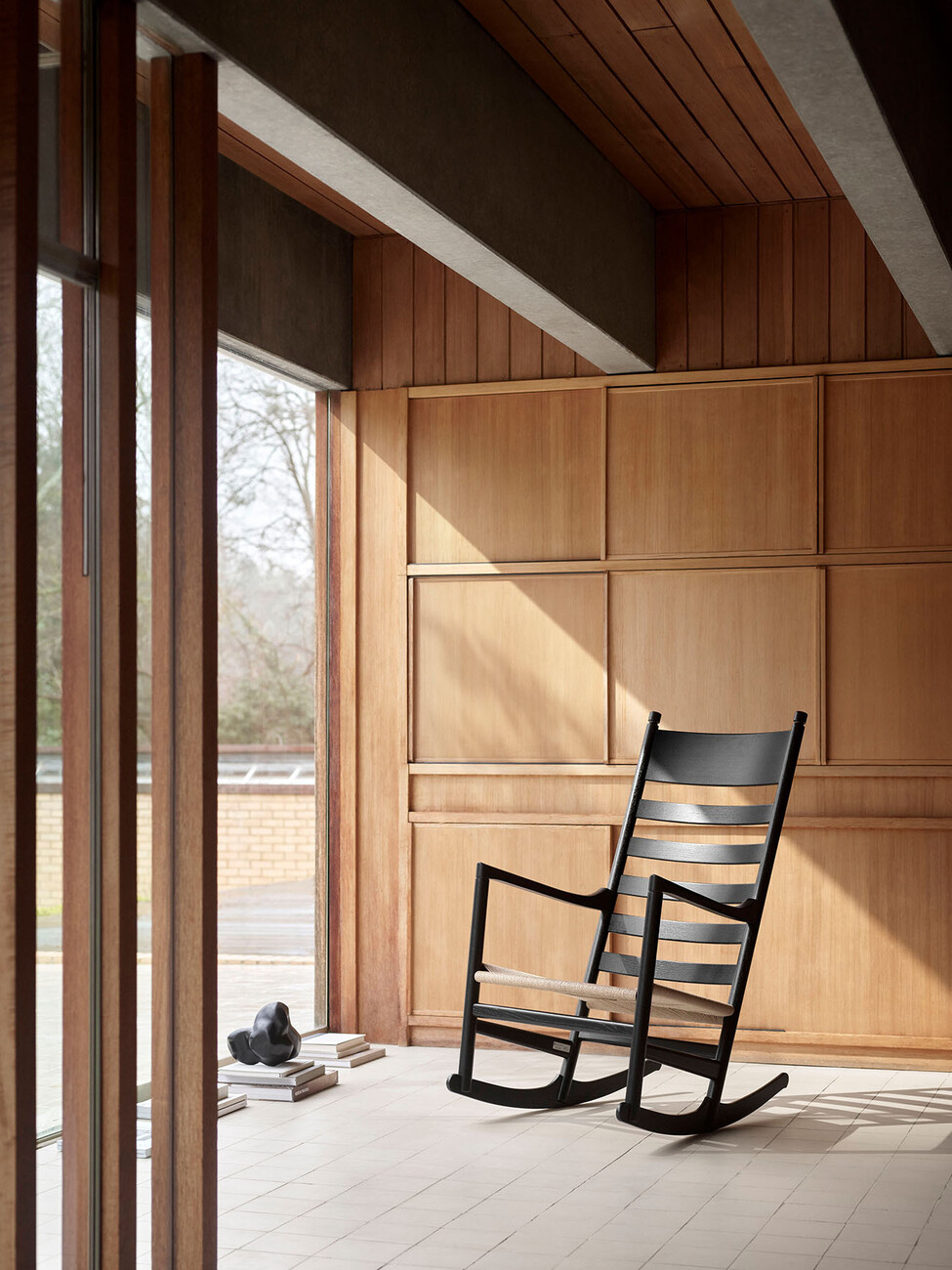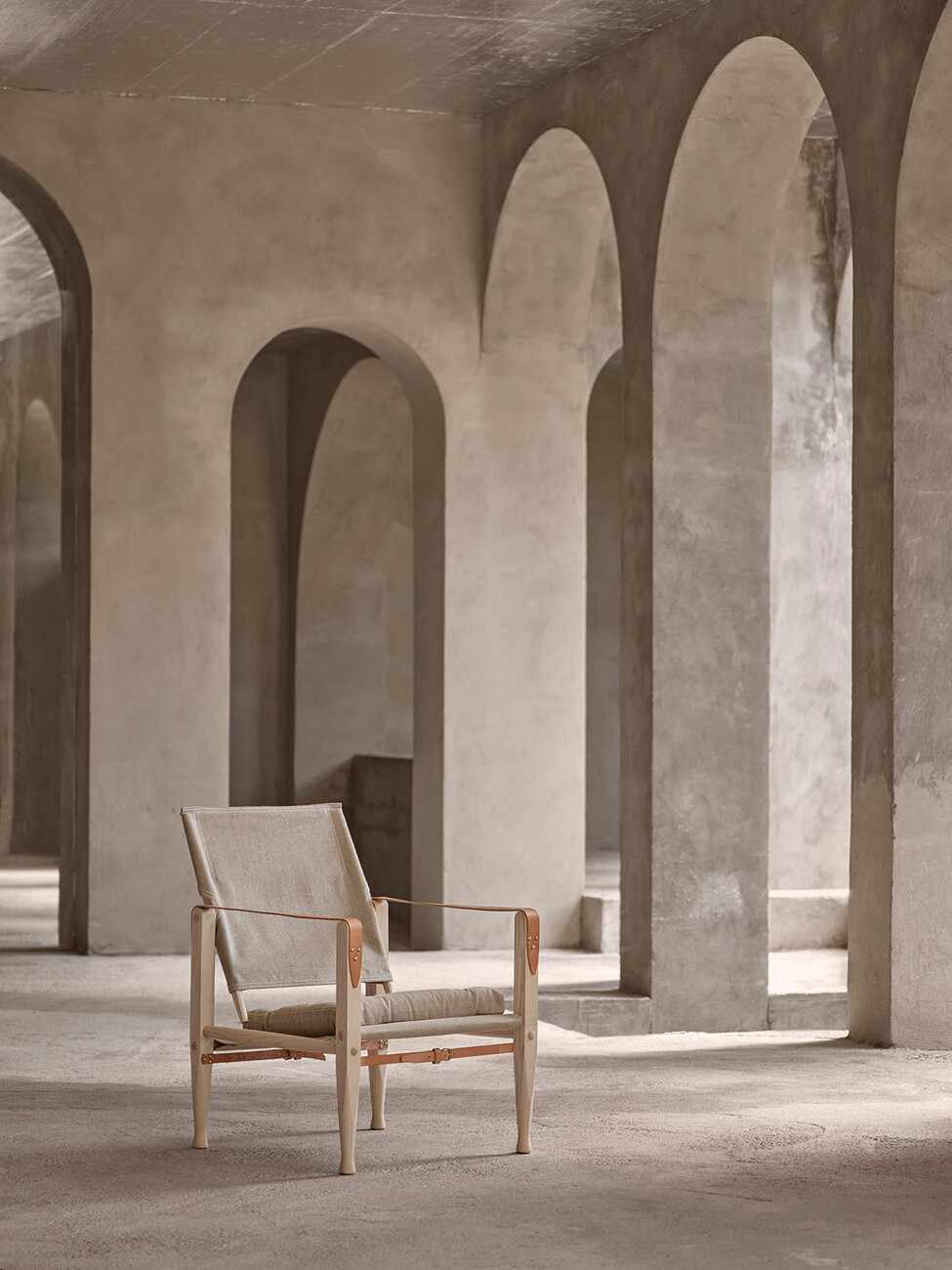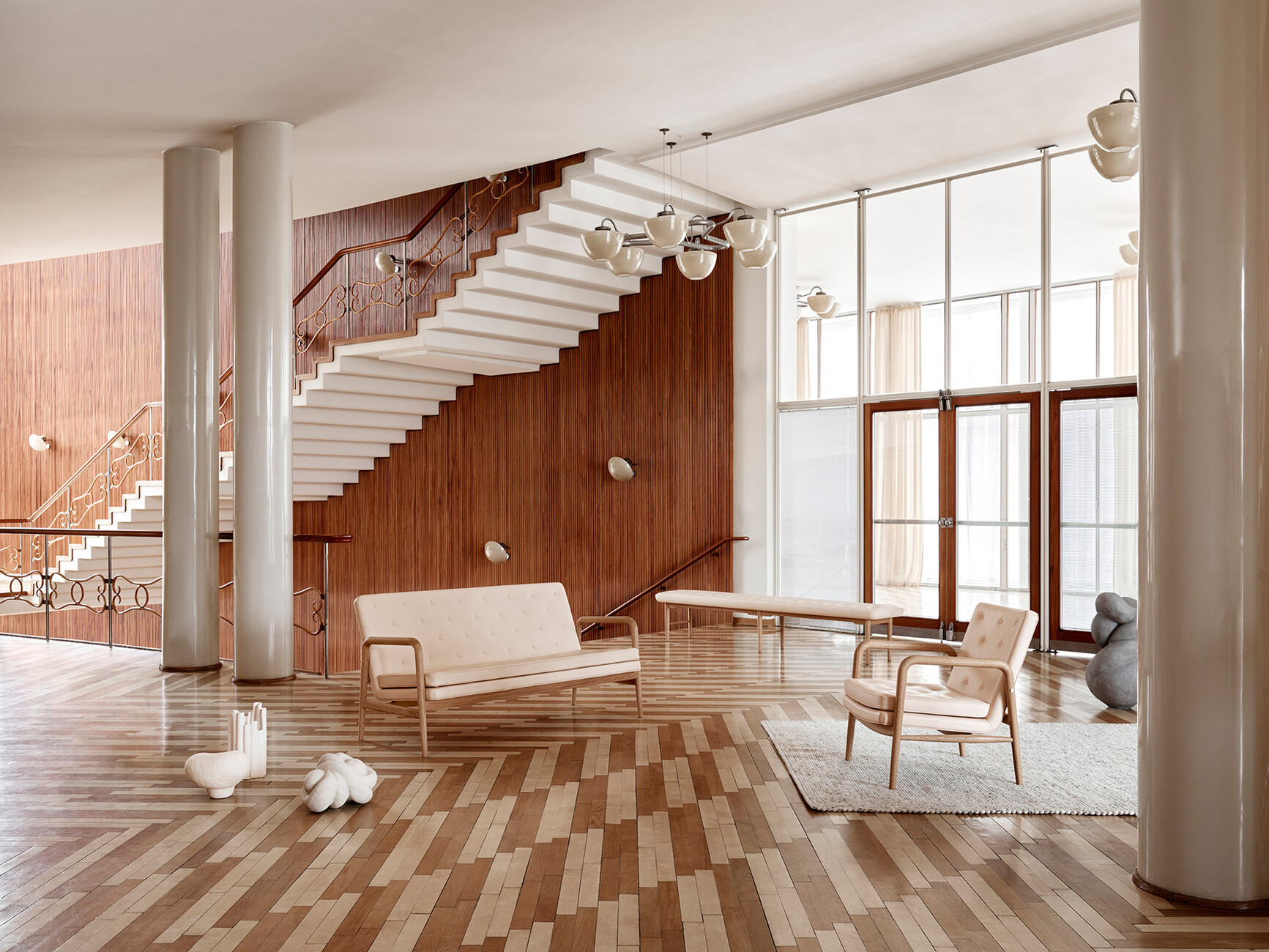Hardwoods, Hand-Made, Hansen
It takes a good two hours’ drive to get to the Danish island of Funen from Copenhagen and involves crossing the bridge over the Great Belt. We are on the way to see Knud Erik Hansen, who has been in charge of the company Carl Hansen & Søn since 2002 – he’s a member of the third generation of the founding family. He lives with his wife Inger Marie Jensen Hansen and a German shepherd dog Pauli in a stately manor house in Hellerup. The couple bought the property with 42 rooms and grounds of 30,000 square meters about 20 years ago and have comprehensively modernized it over the years. It even has its own church – whitewashed like Hellerup Manor, whose origins date back to the 17th century.
Terrace with Teak Furniture
They actually spend most of their time in just one room of the house that boast some 1,500 square meters of space, namely in the combined kitchen and living room on the ground floor where there’s an open fire and comfortable seating confides Knud Erik Hansen. However, he sometimes gets a text message from his wife asking him which part of the house he is currently in, he adds and laughs. It quickly becomes apparent that Knud Erik Hansen is an entertaining and charming person to talk to, someone who enjoys telling stories about his (business) life. We sit on the terrace of the manor house, gazing out across a meadow dotted with beautiful old trees and a watercourse. The Hansens have set the table with sweet Danish pastries and home-made jam. Just like the stackable chairs and the sun loungers the table is from the new AH Outdoor furniture collection designed by architect Alfred Homann, who died last year. It’s made in the company’s own factory for outdoor furniture in Vietnam that is managed by one of the couple’s two sons.
Design History on 1,500 Square Meters
The fact that Knud Erik Hansen not only has a passion for furniture production but also for the history and stories behind the furniture is revealed in many places inside the manor house. In almost every one of the 42 rooms and corridors there are vintage pieces by Carl Hansen & Søn, but also by other Scandinavian manufacturers and designers who are friends of the family – pick-and-mixed somewhat at will with finds from all over the world. Sometimes Knud Erik Hansen also buys items at auctions. For example, always whenever he plans a new a furniture item and there are no longer any originals in the archives. That said, there can obviously only be one chair for sitting in the large dining room: the “Wishbone Chair” masterminded by Hans J. Wegener – the chair that is considered to be synonymous with Carl Hansen & Søn and is probably the company’s most important bread-earner. That at least is the impression you get when you arrive at the company’s factory which is a roughly 30-minute drive away; after all, one of the buildings is made over entirely to producing the chair known as “CH24”. In China alone there are at least five factories that copy the “Wishbone Chair”, comments Knud Erik Hansen. Not that this really worries them because these imitations don’t come close to reproducing the quality of the original chair “Made in Denmark”.
Furniture Production in Denmark
Everything began in 1908 with a small furniture workshop that cabinetmaker Carl Hansen set up on the island of Funen. From 1949 at the latest, the year it began collaborating with Danish designer Hans J. Wegner, the company’s success rests above all on two pillars: the quality of the finishing combined with a good design. "Today, furniture production is only financially viable when it’s on a larger scale," says Knud Erik Hansen, when we meet him for lunch in the canteen of the factory in Gelsted. Since he took over at the helm of the company in 2002 as CEO, he has grown it steadily. Not only are four to five new stores opened worldwide every year. The production facility in Gelsted has also grown now taking up about 60,000 square meters and employing a good 500 staff. Some of them come from a considerable distance, tells us one employee during our tour. That’s especially the case for the training workshop known as “The Lab". But that’s hardly surprising given that classics of design history have always been made at Carl Hansen & Søn and in up to 15 production steps largely by hand – not only the “Wishbone Chair”, but also coffee tables, the “Safari Chair” designed by Kaare Klint or the “Foyer” furniture collection, which is the brainchild of Vilhelm Lauritzen. Another reason why this situation is so special is that many Danish furniture manufacturers have long since outsourced their production to Asia. By contrast, in Gelsted they are investing in training in a move to counteract the lack of specialist staff. Well equipped with CNC machines and robots “The Lab” functions as a separate area within production. Here the prospective cabinetmakers and upholsters also work on vintage models of Carl Hansen & Søn, because the manufacturer also offers customers a repair and restoration service for old items.
Furniture Classics & New Design Items
All the various production steps are housed in the factory – from the warehouse via the manufacture through to quality control. We walk past a high-bay racking area where the wood is stored – oak, nut, and ash but also, more recently, eucalyptus. The latter grows quickly, which is a decided advantage, all the more so now that resources are so scarce and must be used sparingly. Fortunately, they acted in good time and secured adequate supplies says Knud Erik Hansen. The company sources its timber from sustainably-managed forests and only uses the best sections of a trunk. It takes many individual steps and great craftmanship to produce a chair from a piece of wood. We find that out in the production hall where the “Wishbone Chair” is made. Here one employee is responsible for one chair, and each chair is stamped with a maker’s mark. The individual work steps include sanding the curved legs smooth and gluing the separate pieces together, not to mention the quality control both manually and by sight with the aid of UV light. One employee makes between 17 and 30 “Wishbone Chairs” a day, says Hussein, who shows us how to do the sanding work. At the latest in the hall where the artfully woven seat areas are produced, we realize how much physical effort is required to produce one chair that will last for decades.
Even though Carl Hansen & Søn will arguably always immediately be associated with the name of Hans J. Wegener and the “Wishbone Chair”, the company has long since begun working with contemporary designers such as Ilse Crawford, EOOS and Rikke Frost. Nor is it deterred by complex designs, as the “Dream Chair” (TA001P) by Tadao Ando demonstrates. Knud Erik Hansen relates how the development process took five whole years. And even though the unusual chair by the Japanese architect is not necessarily one of the company’s big sellers you can’t help noticing how proud the entrepreneur is that it could be realized despite the fact that its design presents considerable technical and manual challenges.
